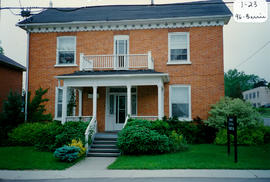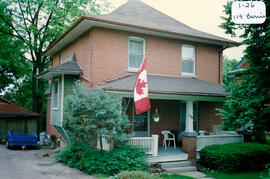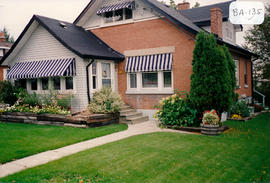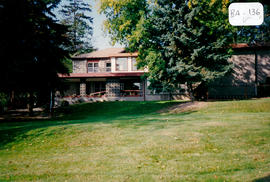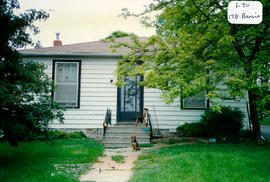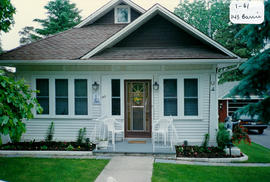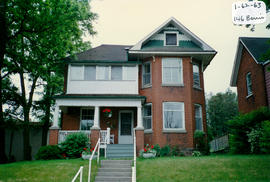- CA BWGPL GJ-HB-2017-03-10-03
- Item
- 1996
Part of George Jackson fonds
The single-family residence located at 84 Barrie St. (on the northwest corner of Barrie and Joseph Streets) was built post-1900 in the Eclectic Edwardian style. The two-storey, ‘L’-shaped building has a hip roof. The projecting, two-storey bay has a wide, projecting gable roof. Edwardian features also include the generous fenestration accentuated by keystones and projecting sills (at the bay windows). Queen Anne features include the variety of textures and materials such as rusticated block on the main building and the wood shingles at the exposed gable. The “wrap-around” nature of the ground-floor verandah and the second-storey balcony are Regency Revival features. Its moulded roof curb is an Italianate feature. This building has load-bearing, block masonry construction and a block foundation. According to the 2000 inventory, the replacement balcony and the post supports are unsympathetic with the original design. (1, 3)
George Jackson


